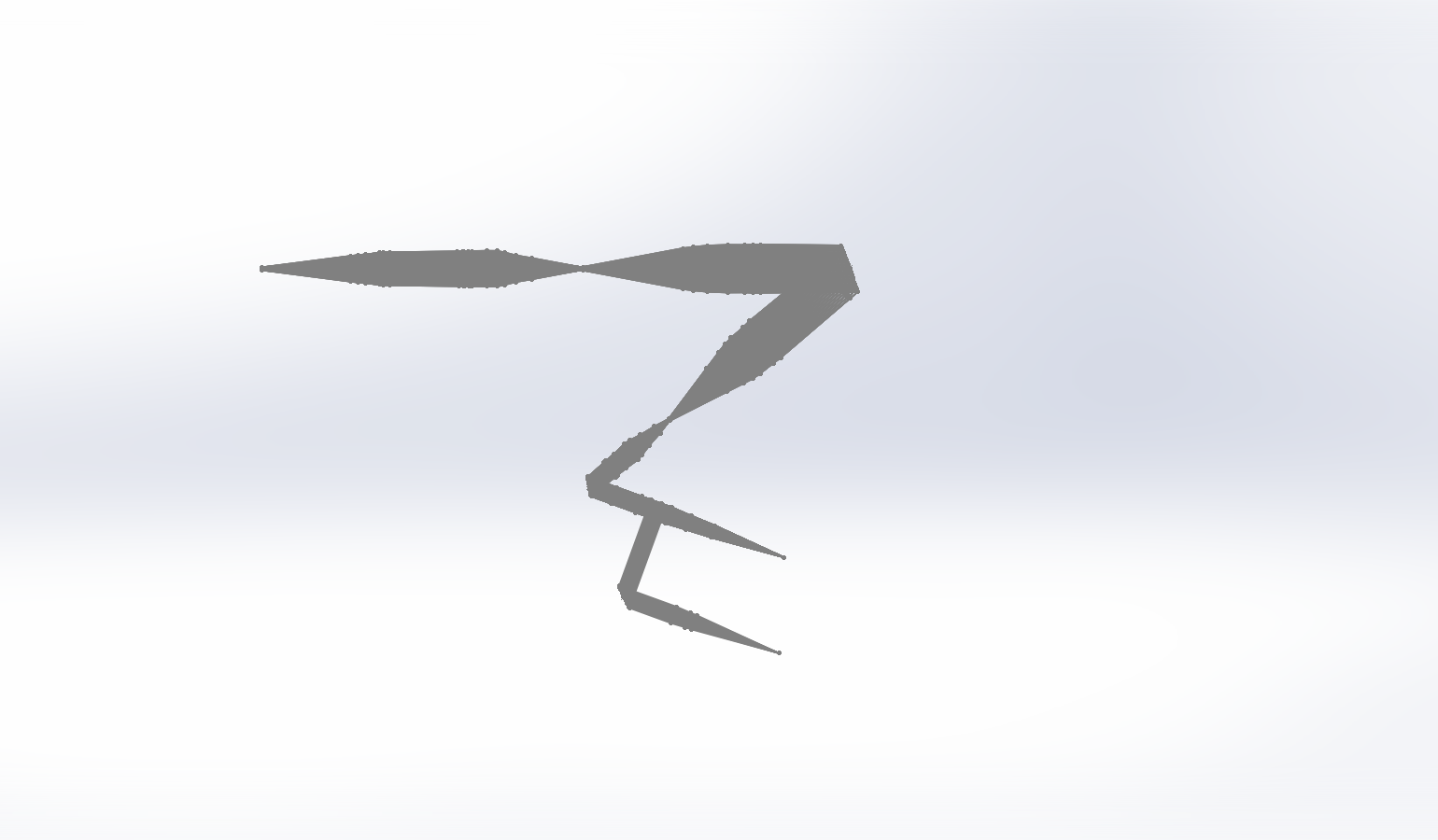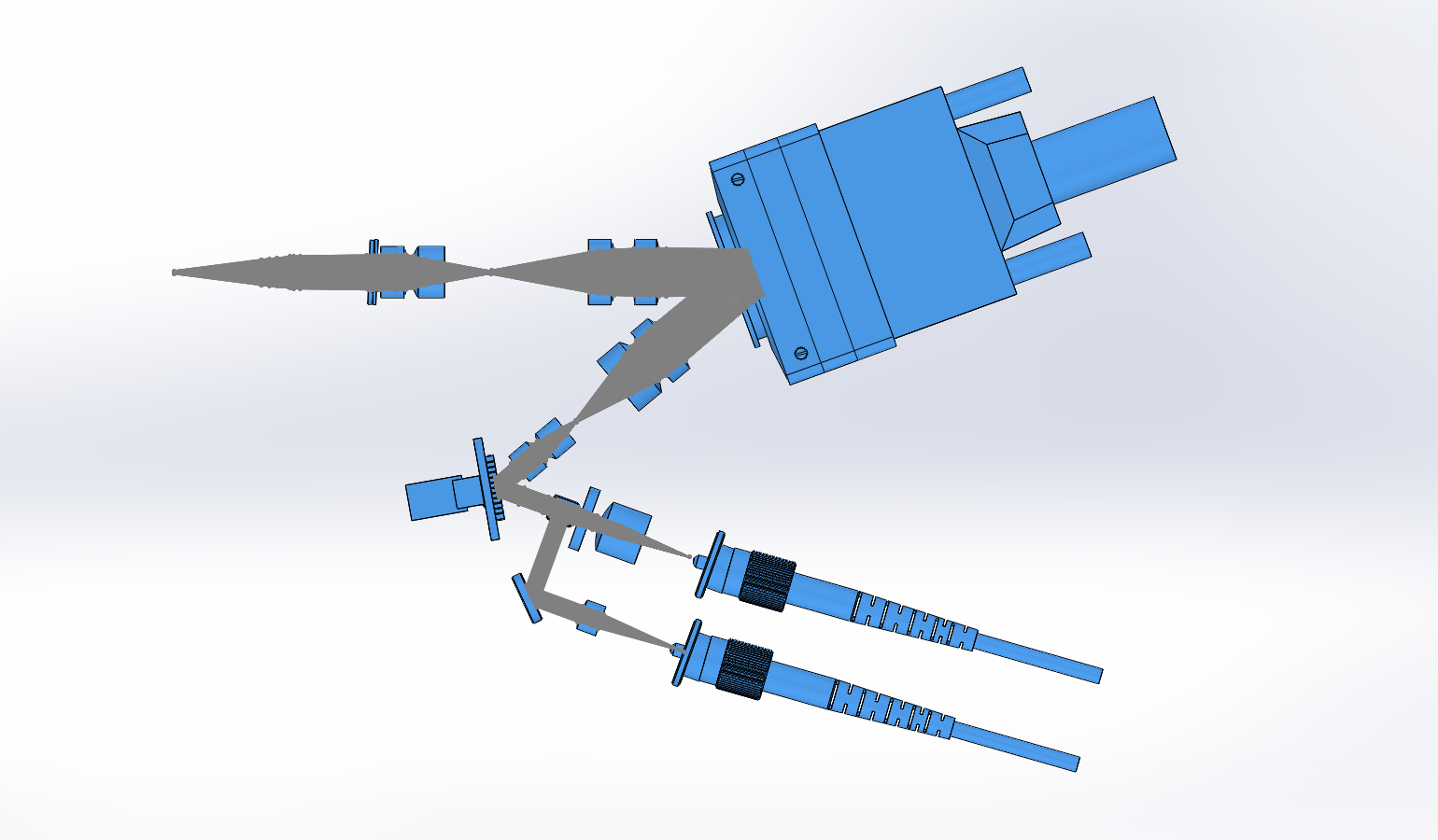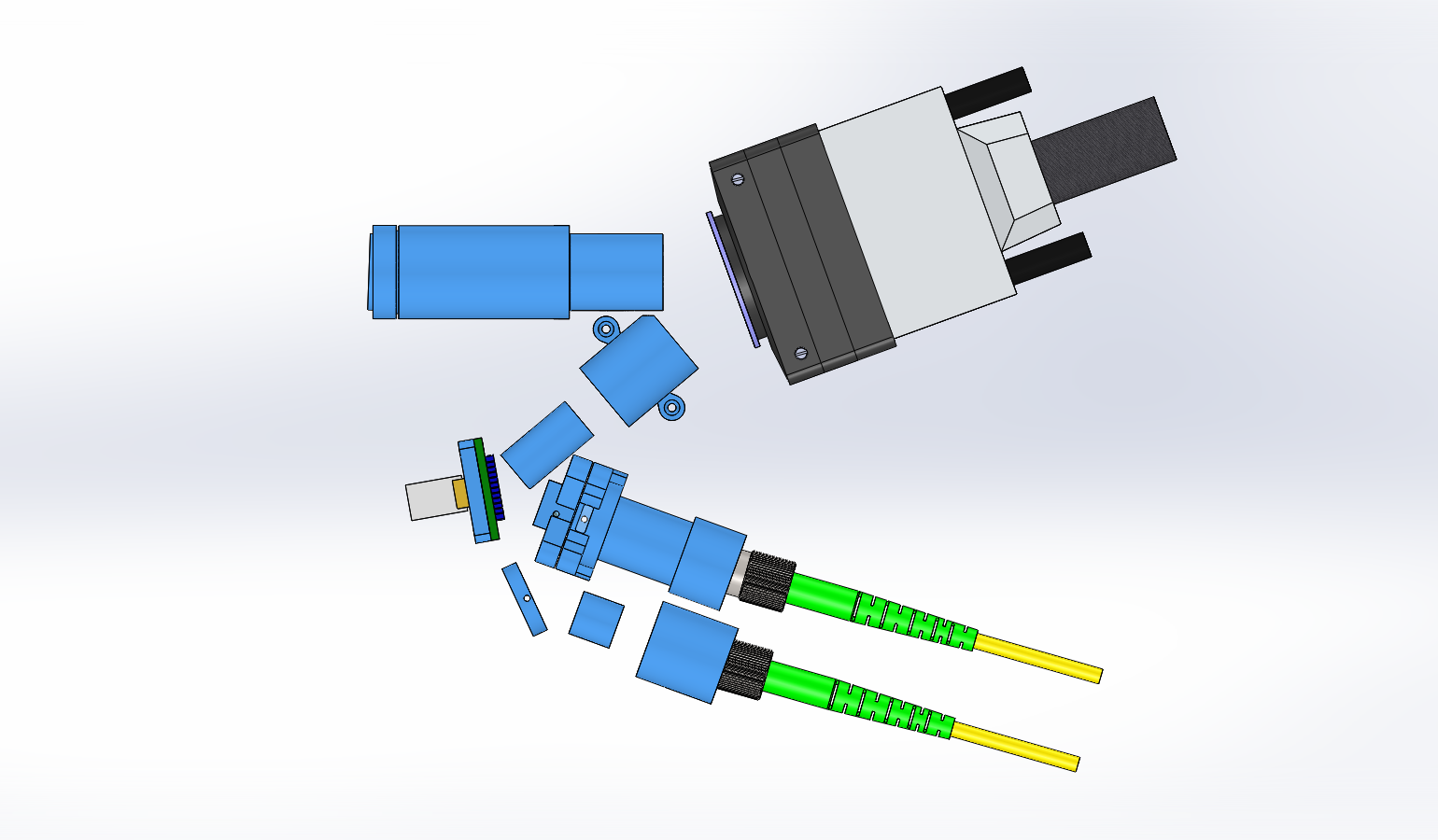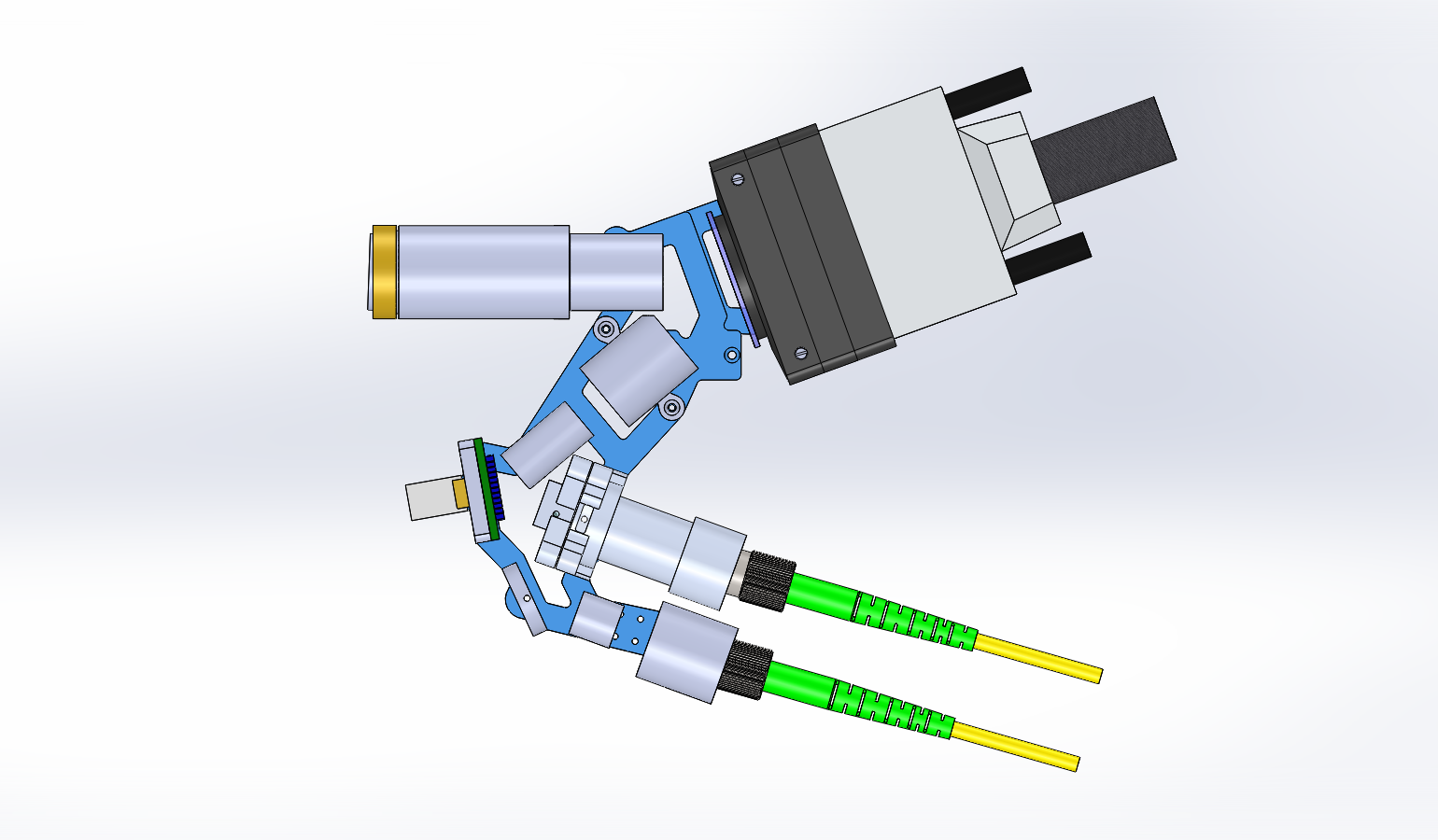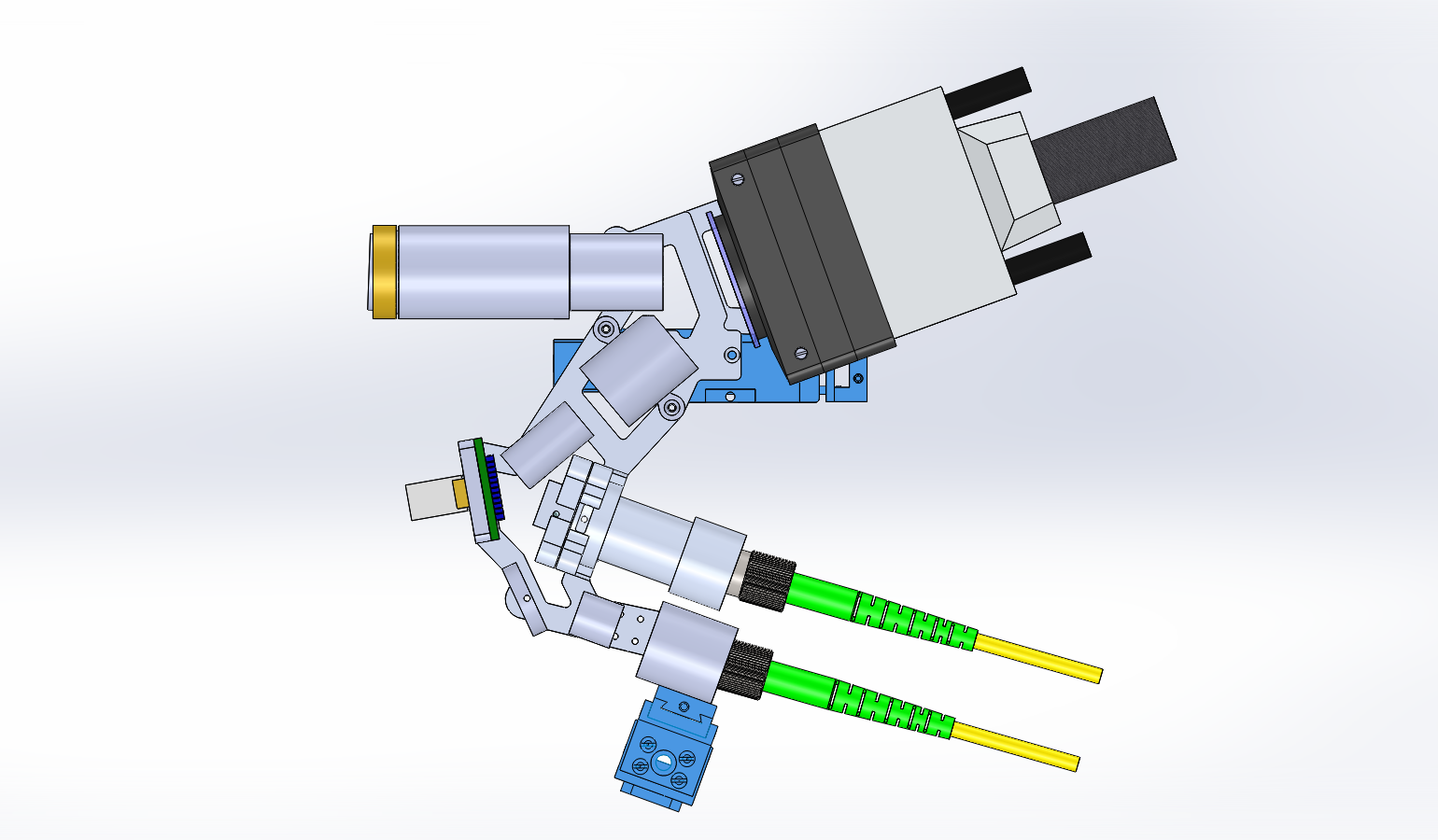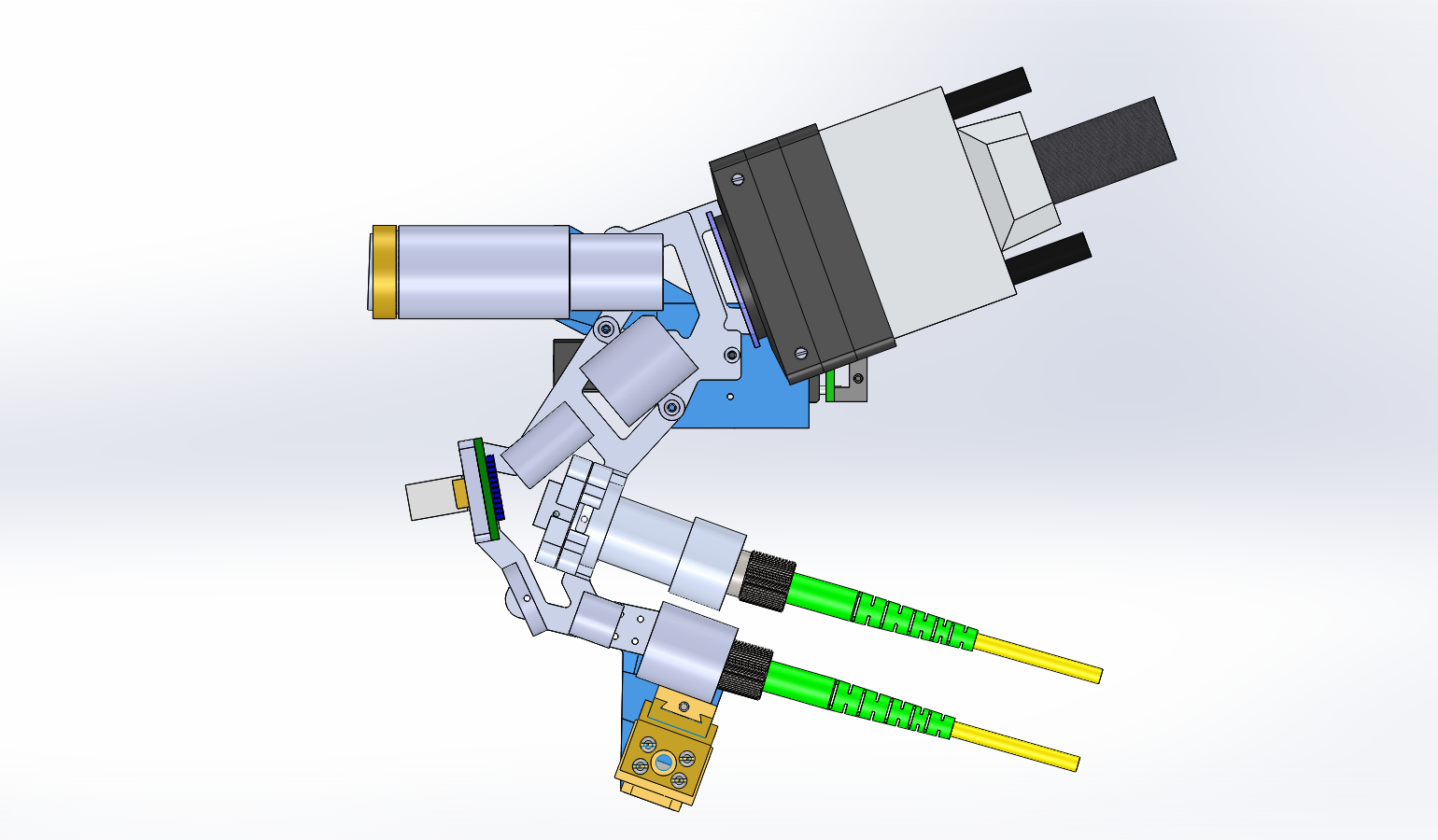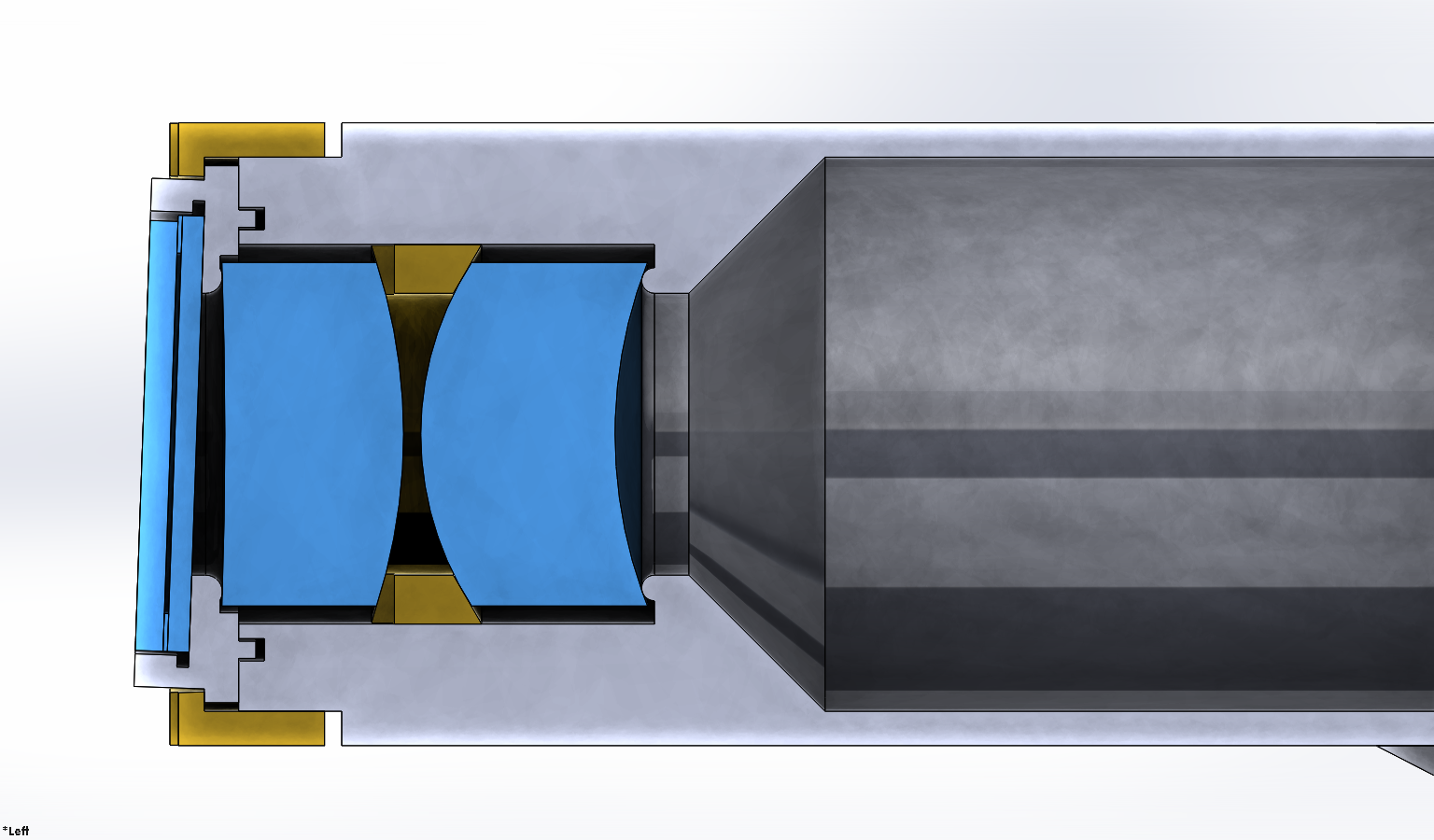Better outcomes through imaging
Reducing a device as big as billiard table to the size of a two-inch stack of index cards
Given the importance of the hyperaccurate positioning of every optical element in this system, I had to expand my knowledge on the topic of optomechanics. Mounting each lens by the appropriate interfaces minimizes the optical performance loss caused by internal stresses in the lens. In this case, each convex surface was contacted by a tangential contact point and each concave surface by a toroidal contact point.
Some mounts became complex when the lenses needed to be positioned extremely close to other elements. One creative solution involved incorporating the toroidal interface for the terminal lens surface into the mount for the next element, a thin wave plate. Custom tests were performed to determine the dimensions of the epoxy channel used to mount the wave plate - no (reasonable) engineering stone left unturned!
The lens positioning mechanics having been designed as best they could, the mounts needed to be bound the the backbone such that each lens ends up in the appropriate position and angle relative to every other lens. Simple screws have too much slop so a system of alignment pins with screws for fixation was designed. The pins (shafts) and holes were spec'd by ANSI B4.1 standards such that the tolerances of the shaft and hole stacked to less than the positional error allowable by the optical plan.
Finally, fabrication was directed by way of engineering drawings with tolerancing to express the accuracy of the design without complicating the fabrication by overtolerancing.
More details on the device and results can be found on the paper’s Impactstory page, which also includes press articles related to the publication:
Links to paper and articles: Handheld adaptive optics scanning laser ophthalmoscope
A pictorial summary of the optomechanical engineering design methodology:
